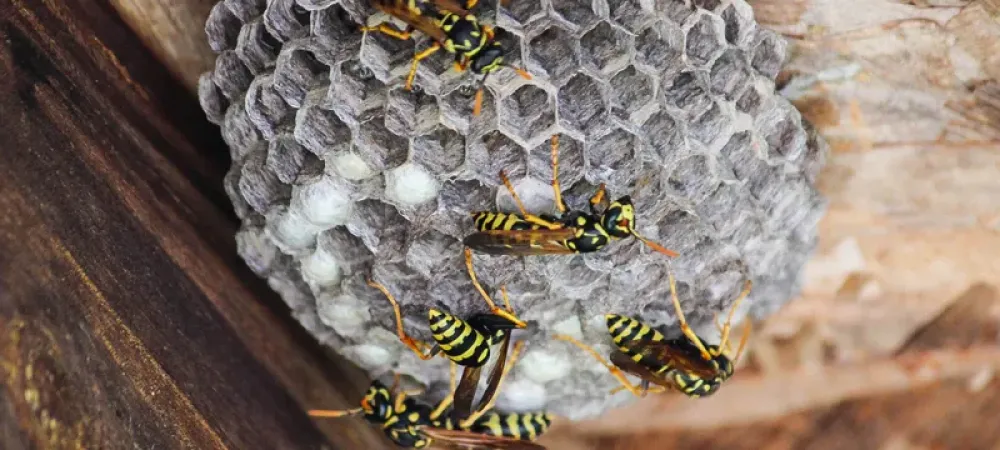A Closer Look into the Different Types of Colorado Wasps

In Colorado, there are many different kinds of stinging insects. Wasps are the worst kind. But the fact is, not all wasps are the same. In fact, some of them are much worse than others.
Let’s take a closer look at the different species and see what kind of threat these pests pose to your family and home.
Yellowjacket
Yellowjackets are giant wasps with yellow and black coloring. You can usually find them in wooded areas, but they will move into homes as the temperatures get colder and they need to search for shelter. These are the insects that are most likely to sting humans.
As far as wasps go, yellowjackets are pretty aggressive. Their nests are relatively small, but you can discover them in almost any part of a house, especially in closets, attics, and other dark, enclosed areas.
Paper Wasp
Paper wasps are small and have a brown and white coloring with brown wings, and they fold like paper. These are the ones that most people have a hard time distinguishing from bees.
Their nests are also small. Paper wasps are aggressive but not as much as yellowjackets. They build their nests in attics, ceilings, and other small, dark areas of the home.
Cicada Killer Wasp
Cicada killer wasps are the largest of the wasps. Because of their coloring and size, they are not generally mistaken for anything else. Their wings are banded with thick black and yellow bands, and their abdomen is black. People can find them in open areas around the home, most often along the property line.
As the name implies, cicada killer wasps are predators. Their main prey is the cicadas that lay their eggs in the ground. The female wasps have a long, stinger-like organ, which she uses to sting the cicadas, paralyzing them. Once they die, the female wasp buries the cicada, so her offspring has a food source.
Tarantula Wasp
Tarantula wasps are also large, metallic blue with black and yellow stripes. They settle in open areas in the mountains and deserts of the southwest and northern Mexico. These types of wasps are aggressive, but they do not sting humans. Their sting is not toxic, but the tarantulas that these wasps search for are.
They hunt tarantulas and locate them by smell. They find them in their burrows and sting them, paralyzing them. Tarantula wasps then lay their eggs on them and leave. When the larvae hatch, they feed on the tarantulas.
Hornet
Hornets are usually in the same areas as yellowjackets. They have a black, orange, and yellow coloring, with a pointed tail. They are generally larger than yellowjackets.
They usually build their nests in trees. Hornets are considered more aggressive wasps, but they do not pose as much of a threat as yellowjackets.
Conclusion
It is important to learn what kind of wasp you are dealing with, as some stings can be severe. If you are stung by a wasp and have any allergic reaction, you must seek medical attention immediately. Other than that, if you catch sight of them on your property, you should call a pest control company right away.
Do you need the help of a wasp control company in Denver? Trust Whitmore Pest Control. We are experienced in wildlife removal, animal damage repair, and many more. Get a free online quote now!
